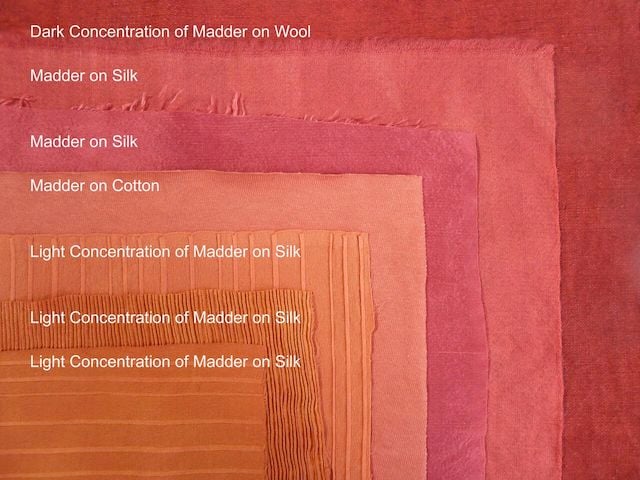
This week: Coaxing madder root to be more red and more mordanting questions…
Every week, we are emailed with questions from our natural dye community asking simple and complex questions that we thought might be worth sharing. Of course, all of your burning questions are answered by natural dyer in chief, Kathy Hattori, Founder of Botanical Colors.
I’ve gone deep into the rabbit hole of your website for the first time. As I read your mordanting section, it seems to contradict what you wrote in regard to madder root and chalk/calcium carbonate. In your mordant section it says to use the chalk as an after bath. In your madder root section it indicates you can specifically add it to the madder root vat itself? Please clarify, thanks.
These are two different processes as I don’t normally mordant with aluminum acetate and chalk, but use aluminum acetate and wheat bran. The chalk is used in madder root to help develop the red color in the dye. You may also come across instructions using citric acid in madder root, which seems to be a direct contradiction to everything I understood, but what it does is help other colorants within the root to develop, hence its use. So I’ve dyed with whole madder root, citric acid, and then shifted pH with calcium carbonate, and gotten some nice colors on cellulose fibers.
…Also, you indicate “do not rinse” after the calcium carbonate step, but to directly dye from there. I am tempted to try your approach and see what happens, because I am open to experimentation, but at the same, I have gotten consistently great results, so my inner voice says don’t change it up. I have always thoroughly rinsed the calcium carbonate. You recommend leaving it on, and from there proceeding to the dye vat.
We don’t rinse after wheat bran, but if you do after chalk and get good results, you should stick with what works for you. It’s entirely possible that chalk needs a rinse as it’s insoluble in water, so could leave a residue that prevents dye take-up but I haven’t had that issue. I also don’t use chalk as much as I do wheat bran.
